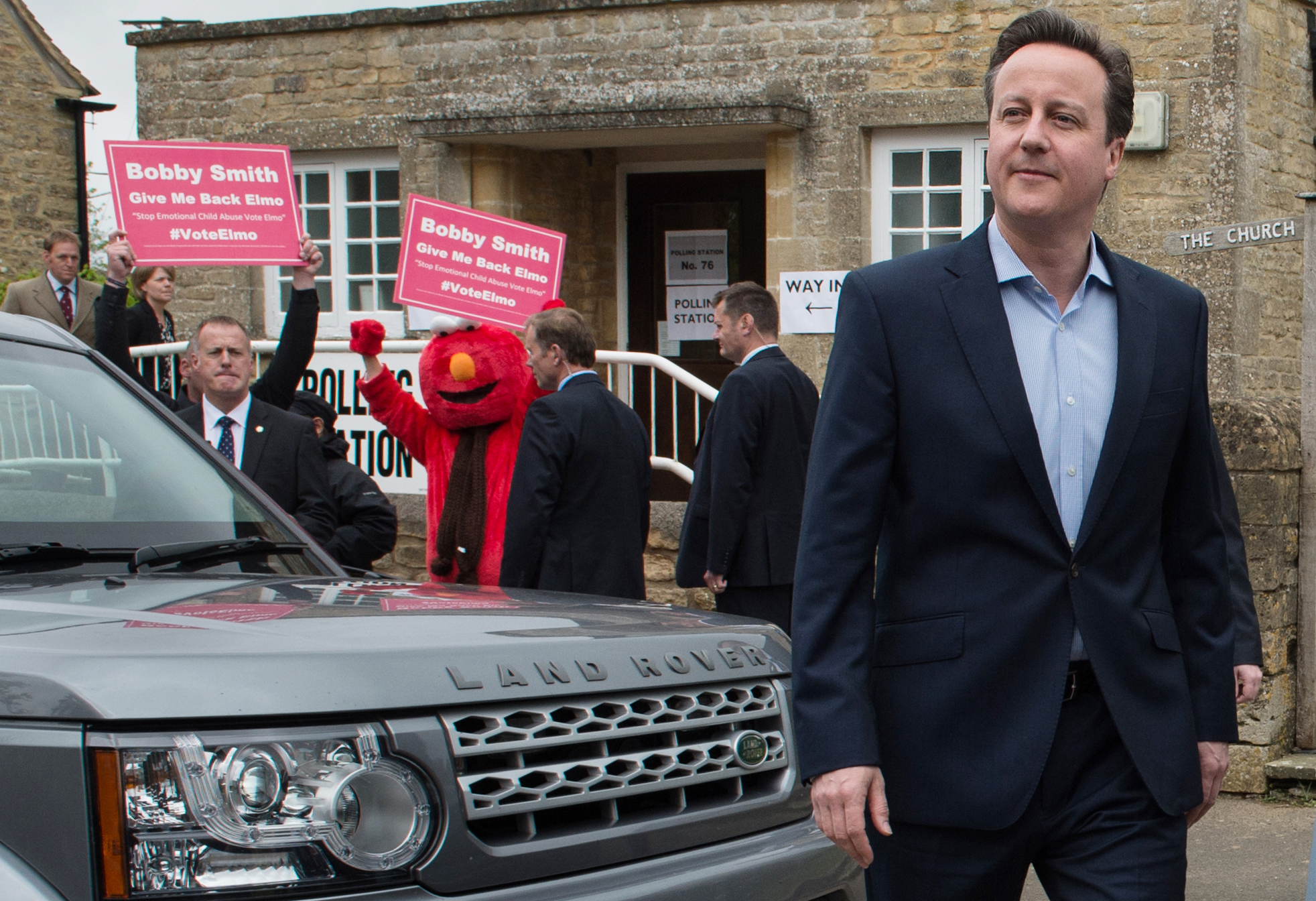
The Conservative Party seemed set to overturn expectations in the U.K. elections on Thursday, with an exit poll released minutes after voting stations closed at 10 p.m. putting party leader and current Prime Minister David Cameron in pole position to form a coalition government.
If the exit poll proves correct — with Conservatives at 316 seats, left-of-center Labour Party at 239, the Scottish National Party at 58 and the Liberal Democrats at 10 — the Conservatives could form a majority coalition with their current partners, the Liberal Democrats.
The exit poll, which gives the first indication of the election result and is paid for by the major news networks BBC, ITN and Sky News, was broadly accurate in the last two elections in 2005 and 2010 but has erred in the past. Pollsters surveyed some 20,000 voters, but this year’s was complicated by the rise in popularity of the Scottish National Party (SNP).
Despite the surprise lead it gives the Conservatives, the poll suggests voters have turned away from the two parties that have dominated U.K. politics for a century. SNP has been the chief beneficiary and is predicted to wipe out the Labour Party in Scotland. The U.K. Independence Party has also eaten into the support of the Conservatives, but because its support is divided evenly over the country and not concentrated, it is unlikely to win many seats.
John Curtice, a professor of politics at Strathclyde University in Glasgow, who will be analyzing the numbers for the BBC, told the Daily Telegraph: “Once upon a time, you could concentrate on Conservative-Labour marginals, throw in a few Lib-Dem seats and basically get it right. Until now you could ignore Scotland. You can’t ignore it any more.”
Opinion polls before Election Day had put the Conservatives equal with Ed Miliband’s Labour Party, raising the prospect of a hung parliament with no clear winner.
The absence of an outright winner could entail weeks of negotiations to build a workable government. If the exit poll is correct, the Conservative-Lib Dem coalition will continue to run the government, and Cameron will be asked by the Queen to form a coalition government. That involves the parties trying to agree on a platform on which they can form a government that can command a majority in the House of Commons.
In 2010, it took five days for the Conservatives and Liberal Democrats to do so. But this year the parties would have to be close to a deal by May 18, when the new House of Commons meets, and certainly by May 27, when the Queen is scheduled to read out the program of the new government.
Read next: What to Know About the U.K. Elections
More Must-Reads from TIME
- Cybersecurity Experts Are Sounding the Alarm on DOGE
- Meet the 2025 Women of the Year
- The Harsh Truth About Disability Inclusion
- Why Do More Young Adults Have Cancer?
- Colman Domingo Leads With Radical Love
- How to Get Better at Doing Things Alone
- Michelle Zauner Stares Down the Darkness
Contact us at letters@time.com